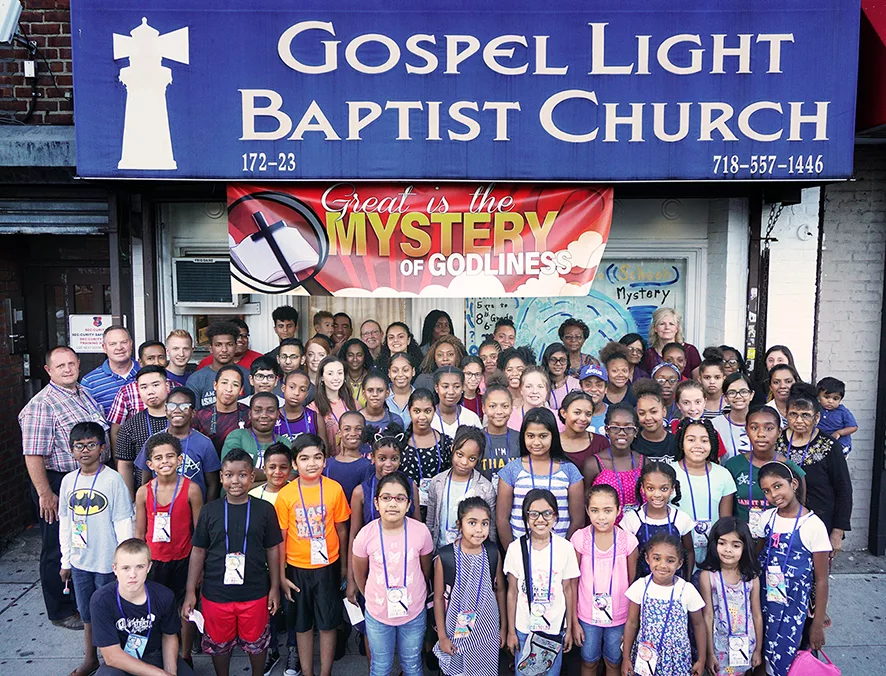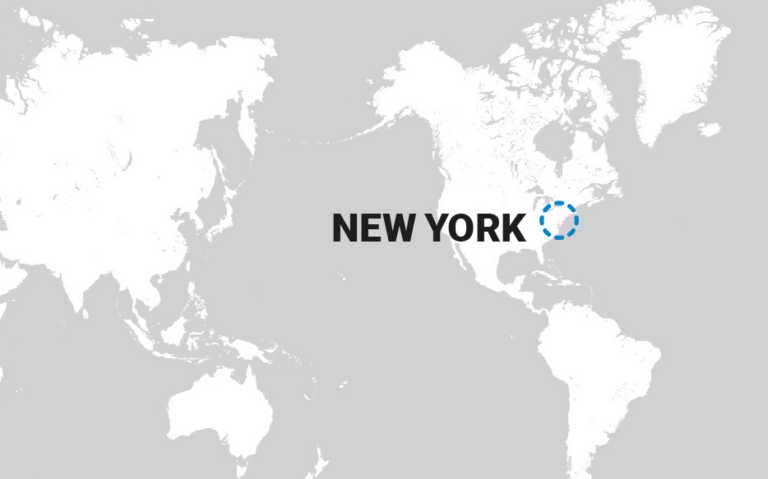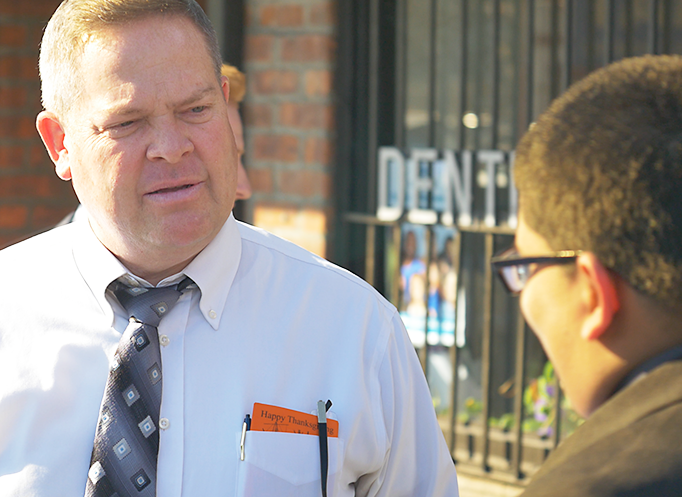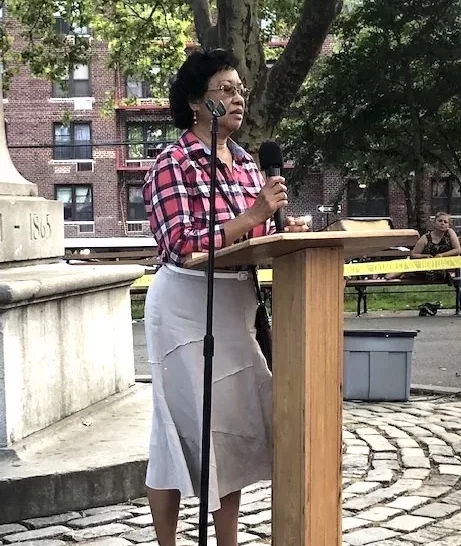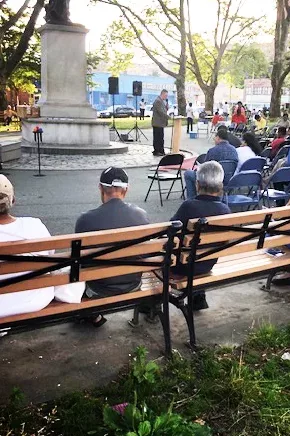
25 million souls in a 25-mile radius
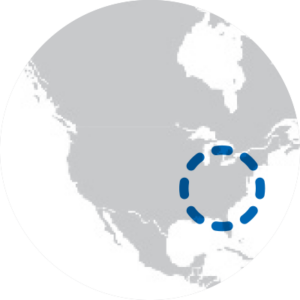
It’s funny how things work out when God starts calling you to a place. When I was in chapel at Oklahoma Baptist College and thinking about the mission field, and where to plant a church, I was open to anywhere, and at one stage I was even praying about Russia.
I could not have predicted that a country boy like me, who worked in the milk barn, and raised the hogs, and helped with the planting and cropping, would one day be doing a different kind of sowing and reaping in God’s harvest fields in the middle of the huge city of New York.
So how exactly did I come to be here, and what has been achieved since we arrived 26 years ago?
The answer to the first question is that the Lord guided in an amazing way. There were many places overseas, and many states in the country we could have gone to, but the Lord directed us here, to the inner city neighborhood of Jamaica, population around 250,000, within the borough of Queens.
And as to the second question, we now have a church of around 100, give or take, with the full spectrum from babies to elderly. We are in a transient area, between Brooklyn and New York’s two main airports—the international John F. Kennedy in Queens, and the domestic La Guardia, in New Jersey. In our first 10 years the face of the congregation would change completely every three months. Of course, New York itself is a highly transient place.
The old Italian, German and Irish neighborhoods are less transient, but many migrants come here and live a little while in New York, then once they get residential status or a green card, or over-stay their visas, they go to other parts of the country where it’s cheaper to live.
But after a while, the Lord built a core nucleus of around 40 people, with visitors coming and going all the time. I learned early on that I needed to try to reach people, witness to them, preach the gospel, and let God work on hearts. I could not control whether people would stay or go. I didn’t let it become a discouragement, but an opportunity to reach people while they were there, and let God work on their hearts.
Right now we are looking for a larger building so we can break out of our crammed “shopfront church” in Hillside Avenue. We need a bigger location, and more space for discipleship ministries with both adults and children. We are meeting in what used to be a beauty parlor. We have looked at nearby locations, including a former Hindu temple, which didn’t work out. God has blessed us through the giving of our people and from friends outside, so we are now in a position to re-locate as we continue to grow.
According to the offical website of New York State, the borough of Queens is the most ethnically diverse urban area in the world, representing 100 nations and speaking 138 different languages.
Residents often closely identify with their neighborhood rather than with the city, each with its own distinct identity.
This the most ethnically diverse urban area in the world, 100 nationalities speaking 138 languages.
Ironically, because the name “Jamaica” does not come from the Caribbean area but from a native American tribal name of “Jameco,” our neighborhood is mostly Caribbean, and our church has 20 different nationalities, from Trinidad, Guyana, Haiti, Dominican Republic, to Puerto Rico, which is the most prevalent. Our associate pastor, Justin Rodriguez, is a descendent of Puerto Ricans. He is married to our daughter Stephanie, and they have three children.
The religious mix of the suburb of Jamaica is predominantly Roman Catholic from the Caribbean, as well as many people from an Islamic background, with some Hindu as well. The New York City Police Department’s anti-terrorist officers have conducted street trainings in our area, and while the adjoining major shopping street of Jamaica Avenue is slowly gentrifying, there was a spike in crime and shootings during the Covid lockdowns. Again, that was a factor across the entire city of New York.
Sometimes it seems like it’s getting rougher. You can hardly walk the streets without smelling marijuana, whether it’s 9 o’clock at night and sometimes 8 o’clock in the morning. But this is where the Lord wants us to be, and we’re still reaching people.
When we pass out tracts, or when I visit people, they are very receptive. In fact, since Covid they are more receptive. Nine out of 10 people take a tract, compared with about six out of 10 before. People don’t tend to get saved quickly, but they do come and hear the preaching, and then the Lord works on their hearts.
How God slowly unfolded his plan
The challenge of the size of the mission field was a burden on my heart. The first inkling I had that the Lord was calling me to New York came at Bible college where I met two different families—one from Long Island and one from Buffalo—and they spoke about the great need there. Then one day a young man, Bob Elzey, came into our class as a substitute teacher. He’d done some mission work in Hawaii, and he gave us preacher boys a lot of questions to consider. I followed him out of the classroom and said I was praying about where God would have me to go, and did he have any advice? He said:
“There is a place where, in 25-mile radius, there’s 25 million people, and that radius is around the Statue of Liberty.”
He said he was going there in the coming year to serve and perhaps this was a place I could consider. I had been thinking about New York, but more of upstate New York rather than the city. But when said that, it heightened our intention and motivated us to go that way.
God gradually unfolded his vision for us. The Philippines missionary Rick Martin visited, and preached about how he was originally was burdened for Haiti, but then he heard through Bob Hughes preach about the great opportunity in the Philippines.
Before I heard Brother Martin I was not completely yielded to the idea of a New York inner city ministry. But that made it more definitive—just the thought of keeping an open mind, and paying attention to the influences that God brings into our lives.
The Lord used Psalm 43:3 to speak to me:
O send out thy light and thy truth: let them lead me; let them bring me unto thy holy hill, and to thy tabernacles.
It touched my heart about the promise that the light and truth would draw people to the Lord, wherever we were led.
On the advice of Dr Jim Vineyard, I took on a teaching role in a Christian school. I did this for two years, then went to the Baptist International Missions (BIMI) candidate school, and started on deputation.
The churches I visited wanted me to take the plunge and go fulltime into ministry, but I was busy teaching, and the Lord was busy maturing us, and teaching us as well! Finally we went on full-time deputation, visiting around 300 churches in 37 states, and moved to New York City in 1999.
Again, I started by working in another role, as God was preparing me. I helped Brother Pete Montoro, who is still pastoring Open Door Bible Baptist church in Astoria, Queens, and after six months looked around for an area to plant a church.
We started by passed out tracts in Green Point, Brooklyn, but quickly realised it was mostly Polish, and people still largely speak the mother tongue. We’d have to learn the language if we were to make any sort of impact there.
We went to Astoria to do some evangelism one Saturday and on the way back, we noticed literally thousands of people in Hillside Avenue, the street that runs parallel with Jamaica Avenue. Together with my son Shane, then 15, we passed out 1,000 tracts in 30 minutes. That clinched it for me. People were open.
More laborers needed for a growing harvest
New York City has only 30 Independent Baptist churches, and a few years ago the Lord convicted me to pray for more church-planters to serve the huge need in our city. While the census says the inner city population is 8.3 million, the true figure is likely closer to 10 or 12 million because of all the immigrants.
And the Lord is answering our prayers for more churches in this needy city where the emphasis is so much on family connections, and worldly culture and finance. We prayed for North Brooklyn and northwest Queens, and there’s now a church at Green Point, Brooklyn, which has been given a stately old building. Another work at College Point, Queens, did not survive Covid. But three more families have come here that I know of—one in Manhattan, one in the Bronx, and another couple, Alan and Jamie Bradley, with three children, are coming to help us for a year or so and then going out to plant a church of their own.
If men can come and be faithful, New York City is wide open to be reached. There are all kinds of areas, yuppie [wealthy young professionals], older, more affluent communities, and ghetto communities that are largely unreached. You could have 100 church-planters come here and you would start to make a difference.
It does take a lot financially, and you’d have to count the cost before you come, but it is doable. Many churches have a heart to reach the inner cities, and New York City has a certain attraction. I think you would get support to come here and start a church.
I had never really done an internship, and I wish I had in a way, but all I knew was that I wanted to preach the gospel and walk the streets and knock doors and speak to people and witness and win them to the Lord. My mindset was to remain and to be faithful, and the Lord has blessed in amazing ways over the years, bringing people in and people staying.
People here want to be loved, they want sincerity and they want someone who’s faithful. If man can come and be faithful, New York City is wide open to be reached. If the Lord can use a slow and methodical and bashful guy like me, he can use anyone. If you’re genuine, you’re loving, and you preach the word of God, people will get saved and will grow in the Lord.
